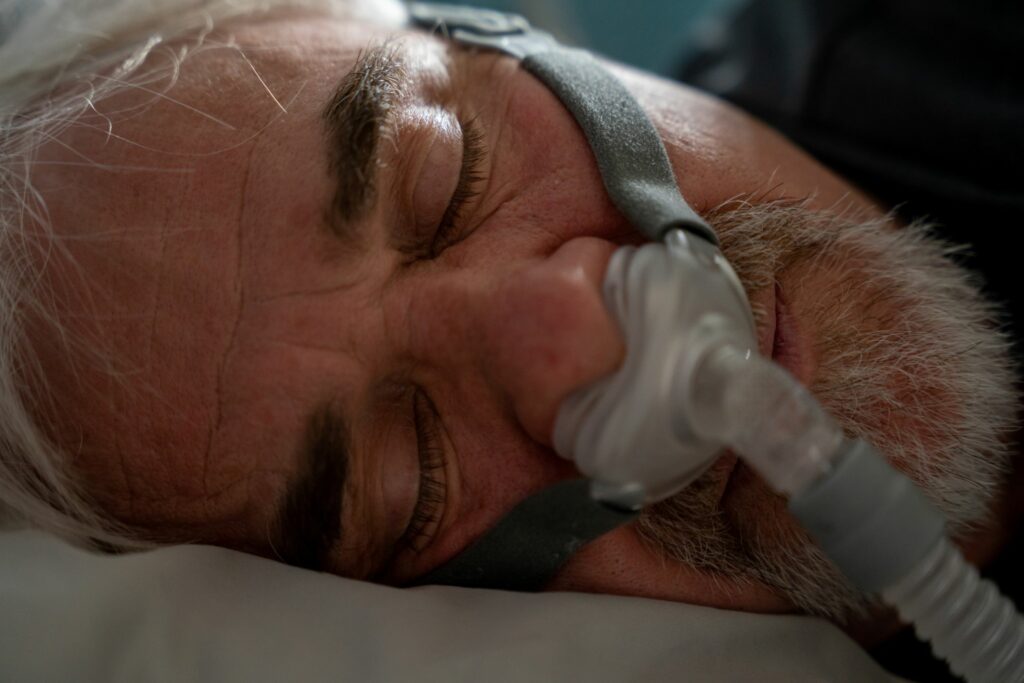Sleep apnea test procedures are improving
It was about 15 years ago that obstructive sleep apnea (OSA) diagnosis and treatment was all the rage in trucking. Today, you rarely hear about it. I hope and believe that’s a testament to the fact the industry is more aware of the condition and how to treat it.
For those who don’t know, OSA is a condition in which the airway collapses frequently during sleep, causing an individual to partially “wake” throughout the night, resulting in an ever-building sleep deficit.

Not a good condition for a professional driver to have. And what an ordeal it once was to diagnose. Long wait times at sleep clinics were just the first hurdle to overcome. Then, once you got in, you had to spend the night sleeping in nearly impossible conditions, in an unfamiliar room with wires running all over your body and strangers observing you on monitors.
Good luck. Can’t sleep? Try again in a few months.
SleepSmart tests
Things have gotten a lot better since then. At a recent industry event I met Daphne Montgomery, national sales director with SleepSmart. At-home tests have been available for awhile now, making it easier for professional drivers, who are rarely home, to test for sleep apnea. SleepSmart is marketing a new method recently approved by Health Canada that simplifies the test procedure even further.
“We eliminated all the time required and the number of doctor appointments, waiting rooms, overnight sleep lab stays,” Montgomery told me. “There’s a significant reduction in the amount of time it takes for an individual, if they’re positive for sleep apnea, to start on their therapy. We provide continuing support virtually as well, so they don’t ever have to go into a clinic or take time off work.”
SleepSmart’s test procedure is remarkably simple and ideal for those who regularly sleep in their trucks.
System components include a device about the size of an Apple watch, a circular sticker about the size of a quarter that’s attached to the sternum, and a finger sleeve. They combine to measure the body’s position during sleep, breathing patterns, and most importantly, the apnea-hypopnea index (AHI) – or the average number of apnea events that occur per hour of sleep.
CPAP treatment
If the test indicates the individual has sleep apnea, then continuous positive airway pressure (CPAP) treatment is still considered the most effective option. Today’s CPAP machines have also come a long way. Their use can be monitored remotely, and the quality of sleep received by the driver measured.
SleepSmart’s program gives fleet managers aggregated reports on their drivers’ CPAP usage without identifying individual drivers.
“This is private health information that’s only accessibly to a healthcare provider,” Montgomery said. “Unless they’ve provided express written consent, the program we take to organizations provides aggregated data quarterly as to the success of the program. In regards to which individuals are in therapy, that’s private. It’s not discussed with the organization.”
This is important information for professional drivers who no doubt already feel their every move is monitored these days. Independent clinicians are there to provide support on the therapy, not to narc on drivers who aren’t using it effectively or at all.
I asked Montgomery about the plethora of CPAP alternatives that have popped up on the market. Everything from pop-can-sized ‘traveler’ devices to wireless gadgets with tiny fans that are installed in the nostrils.
“I won’t speak to other devices out there, but existing technologies from CPAP providers are considered in the sleep apnea world the gold standard of treatment,” she said, adding any device without a hose would be suspect.
Years ago, when you couldn’t go to a trucking industry conference without sitting through a session on sleep apnea, I took the opportunity to get diagnosed myself. I went through the entire ordeal, including an overnight stay in a sleep clinic. It turned out I had the condition and have used CPAP ever since. It’s been life-changing therapy; who knew I didn’t have to go through life tired all the time?
It’s encouraging that there are now easier and less intrusive ways for drivers to get tested. If you think you may suffer from sleep apnea, I encourage you to get tested. And with modern methods that don’t even require a night in the lab, or away from the road for that matter, there’s no excuse not to.
Have your say
This is a moderated forum. Comments will no longer be published unless they are accompanied by a first and last name and a verifiable email address. (Today's Trucking will not publish or share the email address.) Profane language and content deemed to be libelous, racist, or threatening in nature will not be published under any circumstances.
Went to a clinic because I snored and keep the wife awake.
“Oh, you have sleep apnea Use this machine. “ Guess what? Air leaking around the mask if it moves while I’m sleeping wakes us up. The sound from the machine wakes her up and to top it off, I still snore even with a high air pressure!
If I don’t use it, the doctor says he will get my driving license completely taken away.
Great, never had a crash ever and he wants to take away my chance to earn a living plus where we live in farm country, you need transportation to go anywhere.
The whole thing is nothing but smoke, mirrors and medical snake oil far as I’m concerned.